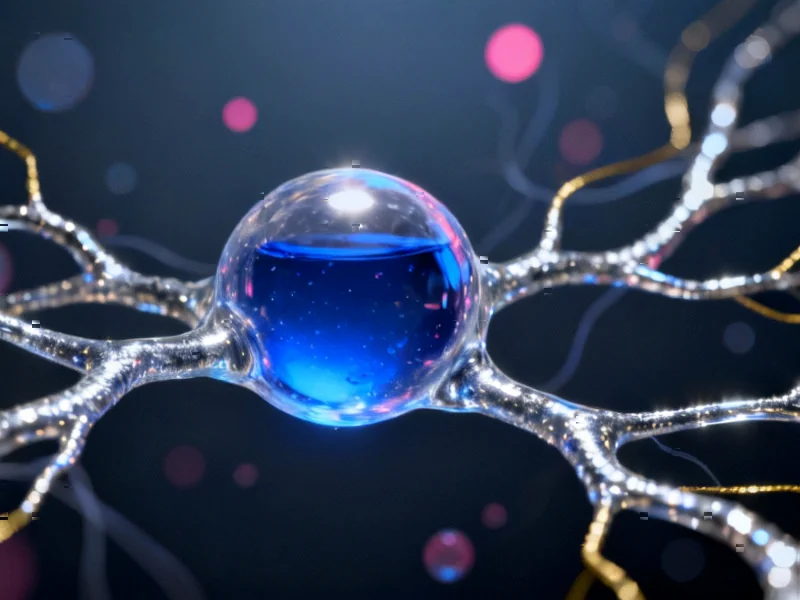Revolutionizing Single-Cell Analysis in Cancer Diagnostics
Researchers have developed an innovative artificial intelligence framework that significantly advances our ability to identify and characterize rare cancer cells in liquid biopsy samples. This breakthrough technology addresses one of the most challenging aspects of cancer diagnostics: detecting and analyzing the extremely rare tumor-associated cells that circulate in patient blood samples, which conventional methods often miss or mischaracterize.
Table of Contents
The new approach combines sophisticated image segmentation with advanced feature extraction to create a comprehensive system for single-cell phenotyping in whole slide imaging (WSI) data. What sets this technology apart is its ability to learn robust feature representations that remain consistent despite technical variations in imaging conditions, making it particularly valuable for clinical applications where consistency and reliability are paramount.
Dual-Module Architecture: How the System Works
The framework operates through two integrated deep learning modules that work in concert to transform raw imaging data into clinically actionable insights. The first module, built on a U-Net architecture enhanced from the Cellpose platform, specializes in precise cell segmentation—accurately identifying individual cell boundaries within complex whole slide images.
The segmentation model demonstrated superior performance compared to general-purpose alternatives, achieving higher F1-scores across critical intersection-over-union thresholds between 0.5 and 0.8. This improved accuracy in detecting individual cells forms the essential foundation for all subsequent analysis, ensuring that feature extraction begins with properly identified cellular structures.
The second module focuses on representation learning—extracting meaningful features from the segmented cells. This component was trained using carefully balanced datasets containing both rare tumor cells and white blood cells from 25 patient samples. To ensure optimal training, the researchers implemented a pre-processing step that controllably depleted white blood cells using a binary classifier with 99.37% accuracy, creating a balanced training environment that better represents rare cell phenotypes., according to related coverage
Comprehensive Performance Validation
The research team conducted extensive validation across multiple critical diagnostic tasks to demonstrate the framework’s capabilities. In classification experiments, the system achieved remarkable 92.64% accuracy in distinguishing between diverse cell phenotypes using logistic regression on the learned features.
The system successfully identified and classified seven distinct rare cell phenotypes:, according to related coverage
- Canonical epithelial circulating tumor cells (CTCs)
- Immune-like CTCs (imCTCs)
- Platelet-coated CTCs (pcCTCs)
- Circulating endothelial cells (CECs)
- Megakaryocyte-like cells
- Fibroblast-like cells
- Morphologically abnormal nuclei (L-Nuclei)
Performance metrics were consistently excellent, with micro-average area under the precision-recall curve reaching 0.969 and macro-average at 0.961. The receiver-operating characteristic curves showed even stronger performance, with micro-average of 0.996 and macro-average of 0.994., as comprehensive coverage, according to industry news
Robustness to Technical Variations
One of the most significant advantages of this approach is its resilience to common technical variations that often plague whole slide imaging. The researchers systematically tested the framework’s response to simulated scanner-related batch effects, including Gaussian blur (mimicking out-of-focus regions), channel intensity variations (representing staining inconsistencies), and spatial resizing (reflecting pixel size differences across imaging systems).
The learned features demonstrated consistently lower sensitivity to these perturbations compared to traditional engineered features. This robustness is crucial for clinical deployment, where imaging conditions can vary significantly between laboratories, instruments, and even across different regions of the same slide.
Enhanced Outlier Detection for Novel Phenotype Discovery
Beyond classifying known cell types, the framework excels at outlier detection—a critical capability for discovering previously uncharacterized or rare cell populations. This unsupervised approach enables researchers to identify unusual cells without requiring pre-existing labels, making it particularly valuable for discovering novel biomarkers and understanding tumor heterogeneity.
The learned features significantly outperformed conventional engineered features in detecting rare tumor-associated cells against the background of abundant white blood cells. This capability addresses the fundamental challenge of liquid biopsy: finding extremely rare cancer-related cells among millions of normal blood cells.
Clinical Implications and Future Applications
This technology represents a substantial leap forward for liquid biopsy applications, potentially transforming how clinicians monitor cancer progression, treatment response, and minimal residual disease. The framework’s ability to consistently identify and characterize rare cell populations opens new possibilities for:
- Early cancer detection through improved sensitivity to rare circulating cells
- Personalized treatment monitoring by tracking specific cell phenotype changes
- Discovery of new biomarkers through unsupervised identification of unusual cells
- Standardized analysis across different clinical laboratories and imaging platforms
The research demonstrates that deep learning-based representation learning can overcome many limitations of traditional feature engineering approaches, particularly regarding robustness to technical variations and ability to capture subtle phenotypic differences. As liquid biopsy continues to evolve as a non-invasive alternative to tissue biopsy, technologies like this will play an increasingly crucial role in advancing cancer diagnostics and personalized medicine.
The framework’s scalability and consistency suggest it could become a foundational tool for clinical laboratories seeking to implement robust, automated cell analysis pipelines. With further validation and regulatory approval, this approach could significantly impact how cancer is detected, monitored, and treated in clinical practice.
Related Articles You May Find Interesting
- Critical WatchGuard Firebox Vulnerability Exposes 71,000+ Devices to Remote Atta
- Former Ridgeline Games Staff Overlooked in Battlefield 6 Credits Despite Foundat
- Experts say the high failure rate in AI adoption isn’t a bug, but a feature: ‘Ha
- Coldriver’s NoRobot Malware Marks Strategic Shift in Russian Cyber Operations
- Hyperscale Leasing Frenzy Propels US Data Center Market to Unprecedented Highs i
This article aggregates information from publicly available sources. All trademarks and copyrights belong to their respective owners.
Note: Featured image is for illustrative purposes only and does not represent any specific product, service, or entity mentioned in this article.



